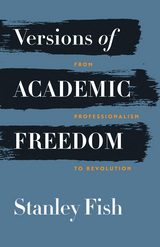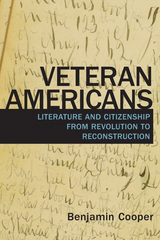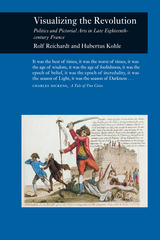3 start with V start with V

Depending on who’s talking, academic freedom is an essential bulwark of democracy, an absurd fig leaf disguising liberal agendas, or, most often, some in-between muddle that both exaggerates its own importance and misunderstands its actual value to scholarship. Fish enters the fray with his typical clear-eyed, no-nonsense analysis. The crucial question, he says, is located in the phrase “academic freedom” itself: Do you emphasize “academic” or “freedom”? The former, he shows, suggests a limited, professional freedom, while the conception of freedom implied by the latter could expand almost infinitely. Guided by that distinction, Fish analyzes various arguments for the value of academic freedom: Is academic freedom a contribution to society's common good? Does it authorize professors to critique the status quo, both inside and outside the university? Does it license and even require the overturning of all received ideas and policies? Is it an engine of revolution? Are academics inherently different from other professionals? Or is academia just a job, and academic freedom merely a tool for doing that job?
No reader of Fish will be surprised by the deftness with which he dismantles weak arguments, corrects misconceptions, and clarifies muddy arguments. And while his conclusion—that academic freedom is simply a tool, an essential one, for doing a job—may surprise, it is unquestionably bracing. Stripping away the mystifications that obscure academic freedom allows its beneficiaries to concentrate on what they should be doing: following their intellectual interests and furthering scholarship.

In this new literary history of early American veterans, Benjamin Cooper reveals how soldiers and sailors from the Revolutionary War through the Civil War demanded, through their writing, that their value as American citizens and authors be recognized. Relying on an archive of largely understudied veteran authors, Cooper situates their perspective against a civilian monopoly in defining American citizenship and literature that endures to this day.

The French Revolution was marked by a wealth of imagery and visual symbolism that inspired the masses to fight for freedom. Visualizing the Revolution surveys the rich and multifaceted visual culture of the French Revolution, exploring its creation and how it conveyed the new revolutionary sensibilities of the era.
Unlike most studies on art of the French Revolution, Visualizing the Revolution embraces a wide range of artistic genres—including prints, architecture, painting, and sculpture—and also draws upon archival documents to investigate the period’s aesthetic concerns. The authors break new ground in methodology and interpretative practice as they tease out the web of connections between these various historical artifacts and argue for the central place of the arts in the transmission of ideas and the political manipulation of the populace. The book translates the provocatively new visual language revealed in these artworks and writings and shows how its emphasis on metaphor, allegory, and symbolism transformed French mass visual culture. An innovative and lushly illustrated study, Visualizing the Revolution is a worthy new contribution to scholarship on the French Revolution and the history of French art.
READERS
Browse our collection.
PUBLISHERS
See BiblioVault's publisher services.
STUDENT SERVICES
Files for college accessibility offices.
UChicago Accessibility Resources
home | accessibility | search | about | contact us
BiblioVault ® 2001 - 2024
The University of Chicago Press









